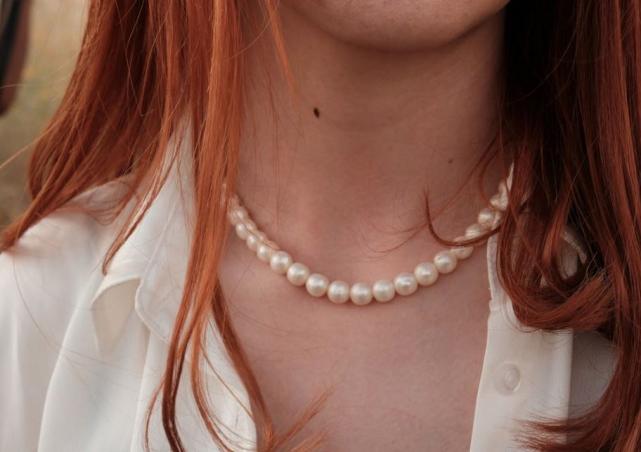Pearls have consistently captured widespread appreciation for their radiant shine and scarcity, alongside the intriguing methods of their creation. The spectrum of pearl colours is broad, with black and white variants standing out due to their distinctiveness. Each type displays unique attributes and charm, influenced by the pearls' geographic origins, the specific molluscs that produce them, and the environments where they grow. These are the key differences between black and white pearls, emphasising their singular properties and compelling allure.
Origin and types
While they possess comparable surfaces, black and white pearls emerge from significantly different conditions and distinct types of oysters. Predominantly, black pearls are sourced from the moderate and untouched aquatic regions of French Polynesia, attributed to the black-lipped oyster, Pinctada margaritifera. These pearls showcase a variety of shades that span from metallic grey to radiant peacock green and rich purple, indicating the varied environmental influences and biological characteristics inherent to their species.
Conversely, white pearls are typically produced by the Akoya oysters in the colder seas of Japan and China, known for their flawlessly round shapes and exceptional shine. Additionally, white pearls are also sourced from the South Sea and freshwater locales, contributing to a variety in size and subtle colour overtones.
Colour formation
The distinctive hues of black and white pearls are a result of the inherent biological and ecological traits of the oysters that cultivate them. The unique colouration of black pearls stems from the substantial layers of nacre secreted by the black-lipped oyster. The diet of the oyster, water temperature, and mineral content in their habitat are crucial in shaping the unique colour palette of these pearls.
In contrast, white pearls are known for their milder shine and a spectrum of overtones, including pinks, silvers, and greens. These characteristics are predominantly influenced by the genetic attributes of the Akoya oyster, coupled with the cooler oceanic temperatures that affect the nacre deposition differently from their tropical counterparts.
Cultural and symbolic meanings
Pearls possess significant cultural and symbolic importance that varies greatly across different cultures. Black pearls are often seen as emblems of mystery and sophistication and are believed to bring prosperity and affluence. Their rarity and distinctive colours also lend them an air of wisdom and are valued in many traditions for their protective qualities.
White pearls, with their immaculate and bright look, have been traditionally linked to purity and innocence. This makes them a preferred choice in bridal attire and in societies that hold traditional values in high regard. Their enduring appeal and classic elegance also represent fresh starts and purity, enhancing their significance as gifts and in ceremonial outfits.
Aesthetic and styling
The visual appeal of black and white pearls offers varied styling possibilities. Black pearls are particularly esteemed in contemporary jewellery designs for their bold and mysterious charm. They are typically featured in pieces that accentuate their unique shades and iridescent properties, suitable for evening and statement wear.
White pearls, known for their iconic lustre and spherical form, are staples in classic jewellery collections. They are celebrated for their adaptability and can be styled for diverse occasions, from casual to formal. Their compatibility with a variety of colours and materials, such as gold, silver, and precious stones, ensures their constant popularity in the fashion industry.
Price and availability
Market trends for black and white pearls vary considerably, impacting their cost and accessibility. While both types are seen as high-end, black Tahitian pearls are less common and usually attract higher prices in the market. Current studies predict that the worldwide market for pearls will expand, anticipated to achieve an estimated value of around $16.24 billion by 2032. This growth is driven by rising consumer interest in luxury products and the unique position pearls hold in the jewellery sector.
Care and maintenance
Effective pearl upkeep is imperative, no matter the variety. These precious gems are vulnerable to harm from harsh chemicals, elevated temperatures, and careless treatment. To prevent any marks or scratches, pearls should be isolated from other jewellery items and stored in a climate-controlled setting to keep their glow intact.
Black pearls, in particular, require scrupulous attention due to their tendency to display fingerprints and accumulate dust on their dark surfaces. A routine of soft wiping with a gentle fabric is essential to sustain their visual charm and physical durability.
Both black and white pearls possess unique qualities that resonate with diverse aesthetic preferences and stylistic inclinations. An in-depth comprehension of their distinct attributes not only bolsters admiration for these elegant gemstones but also guides judicious enhancements to any jewellery ensemble. Whether it’s the deep allure of black pearls or the tranquil elegance of white pearls, choosing either one adds a refined touch and enchanting presence to any wardrobe selection.






